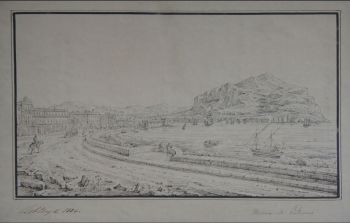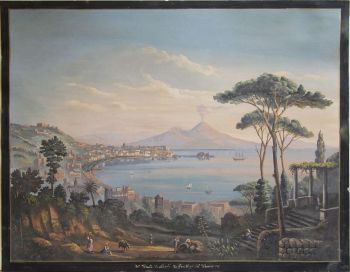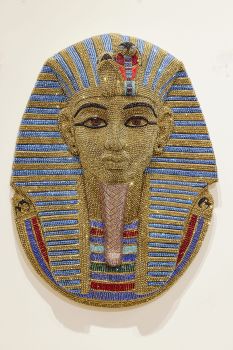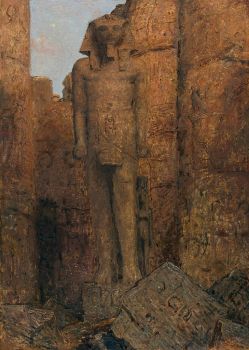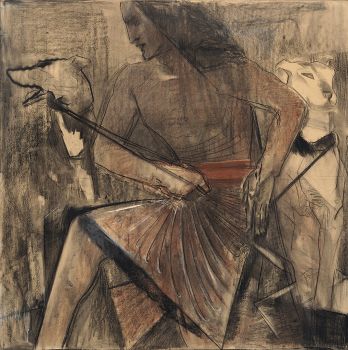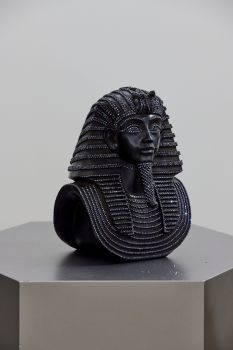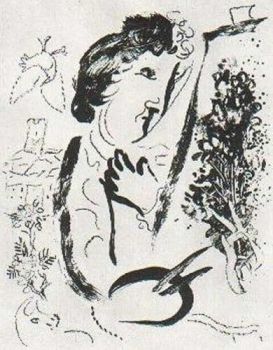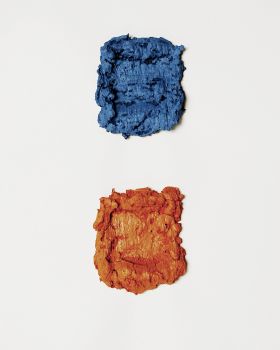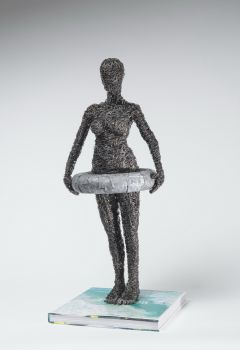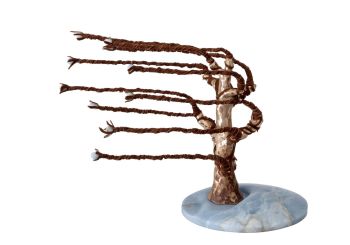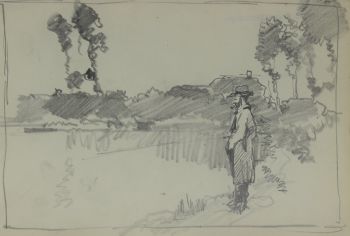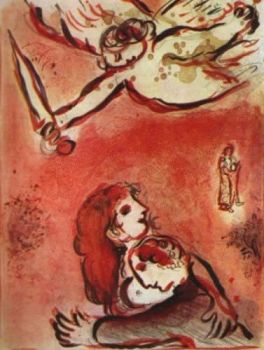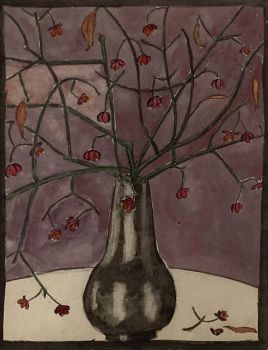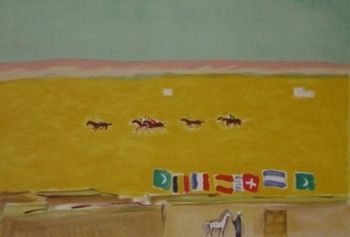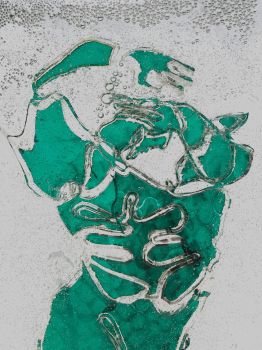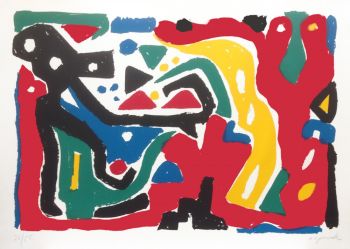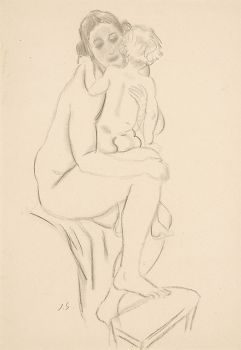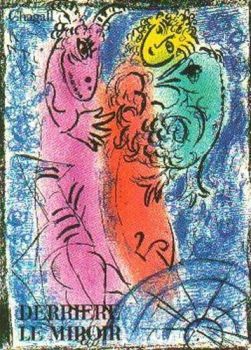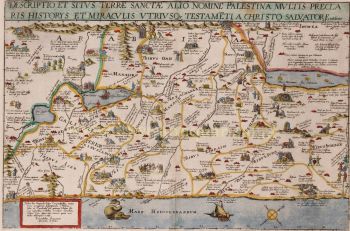Al-Idrisi's geographical account of northern Africa 1796
Muhammad Idrisi
CartaPelle
Attualmente non disponibile tramite Gallerease
- A proposito di opere d'arteAL-IDRISI, Muhammad and Joannes Melchior HARTMANN (translator).
Africa.
Göttingen, Johann Christian Dieterich, 1796. 8vo.
Slightly later black half goatskin.
Second edition of a Latin translation of a work on the geography of Africa, written by the Islamic geographer and botanist Muhammad al-Idrisi (1100-1165). It deals specifically with the geography of northern Africa, Egypt and the Sahara desert, covering its soil, cities, population, mountains, deserts, rivers and monuments. Al-Idrisi also mentions various travel routes from one city to the other. Around 1138, al-Idrisi was invited to the court of the king of Sicily, Roger II, who asked him to map the world as it was then known. This map is now lost, but Roger II also asked for supplemental texts to comment on the map. "Emissaries were sent far and wide, and from the information they brought back the Kitab al-Rojari [Book of Roger] was compiled, and completed by January 1154" (Howgego). Various manuscripts containing (parts of the) Kitab al-Rojari have survived, and the present translation was based on one of them. The present work was translated and edited by the Johannes Melchior Hartmann (1764-1817), who worked from a medieval Arabic manuscript at the University of Jena.
With a library stamp. Somewhat browned and foxed throughout. Binding worn at hinges and along the extremities. Otherwise in good condition.
Gay 345; Howgego, to 1800, I5; not in Atabey; Blackmer. - A proposito di opere artistaMuhammas al-Idrisi (nato nel 1100, Sabtah, Mor. - morto nel 1165/66, in Sicilia, o Sabtah), era un famoso geografo arabo e consigliere di Ruggero II, re normanno di Sicilia. Pochi fatti sono noti sulla vita di al-Idrīsī. È nato a Sabtah (ora Ceuta, un'enclave spagnola in Marocco), ha trascorso gran parte della sua infanzia viaggiando in Nord Africa e Spagna e sembra aver acquisito informazioni dettagliate e accurate su entrambe le regioni. È noto per aver studiato a Córdoba per un paio d'anni. Ha viaggiato in molte parti dell'Europa occidentale, tra cui il Portogallo, la Spagna settentrionale, la costa atlantica francese e l'Inghilterra meridionale. Ha visitato l'Asia Minore quando aveva 16 anni. Nel 1145 circa al-Idrīsī entrò al servizio di Ruggero II di Sicilia, tappa che segnò una svolta nella sua carriera. Ruggero II gli commissionò una mappa del mondo, con conseguente completamento di tre grandi opere geografiche: un planisfero d'argento su cui era raffigurata una mappa del mondo, una mappa del mondo che divideva la Terra a nord dell'Equatore in 7 zone climatiche e un testo geografico come chiave del planisfero. Questo era il suo magnum opus di geografia descrittiva, noto come Al-Kitāb ar-Rujārī ("Il libro di Ruggero"). Al-Idrīsī completò il libro nel gennaio 1154, poco prima della morte di Roger. Il planisfero d'argento è andato perduto, ma le mappe e il libro sono sopravvissuti. Al-Idrīsī aveva una buona conoscenza della letteratura araba ed era anche un poeta affermato. Gli ultimi anni della sua vita sono sconosciuti. Il suo nome completo era Abu Abdullah Muhammad al-Idrisi al-Qurtubi al-Hasani as-Sabti (أبو عبد الله محمد الإدريسي القرطبي الحسني السبتي)
Artwork details
Related artworks
Antonie Derkinderen
Memory book Exhibition of Dutch Painting1892
Prezzo su richiestaKunsthandel Pygmalion
Engelbert Kaempfer
IL LIBRO DI ENGELBERT KAEMPFER1651 - 1716
Prezzo su richiestaZebregs & Röell - Fine Art - Antiques
Tilmanus Nicolaus Maastricht
Missale Romanum con fornimenti d'argento olandesi1788 - 1792
Prezzo su richiestaJacob J. Roosjen SRI
Hermann Nitsch
"UNDER MY SKIN" Signed book incl. small artwork and DVD in a matching box2010 - 2014
Prezzo su richiestaGallerease Selected
LAWRENCE WEINER
"SKIMMING THE WATER [MENAGE A QUATRE]" Signed book plus small artwork2010 - 2014
Prezzo su richiestaGallerease Selected
Tilmanus Nicolaus Maastricht
Missale Romanum con fornimenti d'argento olandesi1788 - 1792
Prezzo su richiestaJacob J. Roosjen SRI
Antonie Derkinderen
Memory book Exhibition of Dutch Painting1892
Prezzo su richiestaKunsthandel Pygmalion
Yoko Ono
YOKO ONO: "ARISING" SIGNED BOOK PLUS SMALL ARTWORK 2010 - 2014
Prezzo su richiestaGallerease Selected
1 - 4 / 22Marius Bauer
The Temple of Ramses II at Karnak Image in Luxor1919
Prezzo su richiestaStudio 2000 Art Gallery
1 - 4 / 10Artista Sconosciuto
UN RARO GRANDE TELESCOPIO GIAPPONESE IN PELLE LACCATA1750 - 1800
Prezzo su richiestaZebregs & Röell - Fine Art - Antiques
Rene Rietmeyer
"Portrait of Rauschenberg, January 2002"2002
Prezzo su richiestaEuropean Cultural Centre Collection
1 - 4 / 24

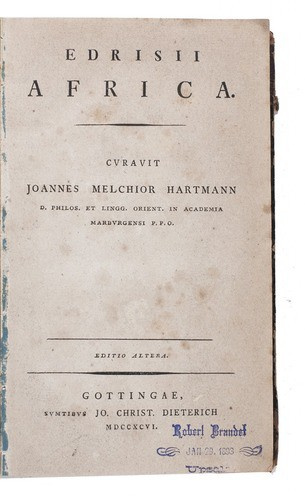












!["SKIMMING THE WATER [MENAGE A QUATRE]" Signed book plus small artwork by LAWRENCE WEINER](https://media-2.gallerease.com/images/442bfd5f-fc31-4e18-a2fa-ee0c08eade64/350x350/skimming-the-water-menage-a-quatre-signed-book-plus-small-artwork.jpg)








